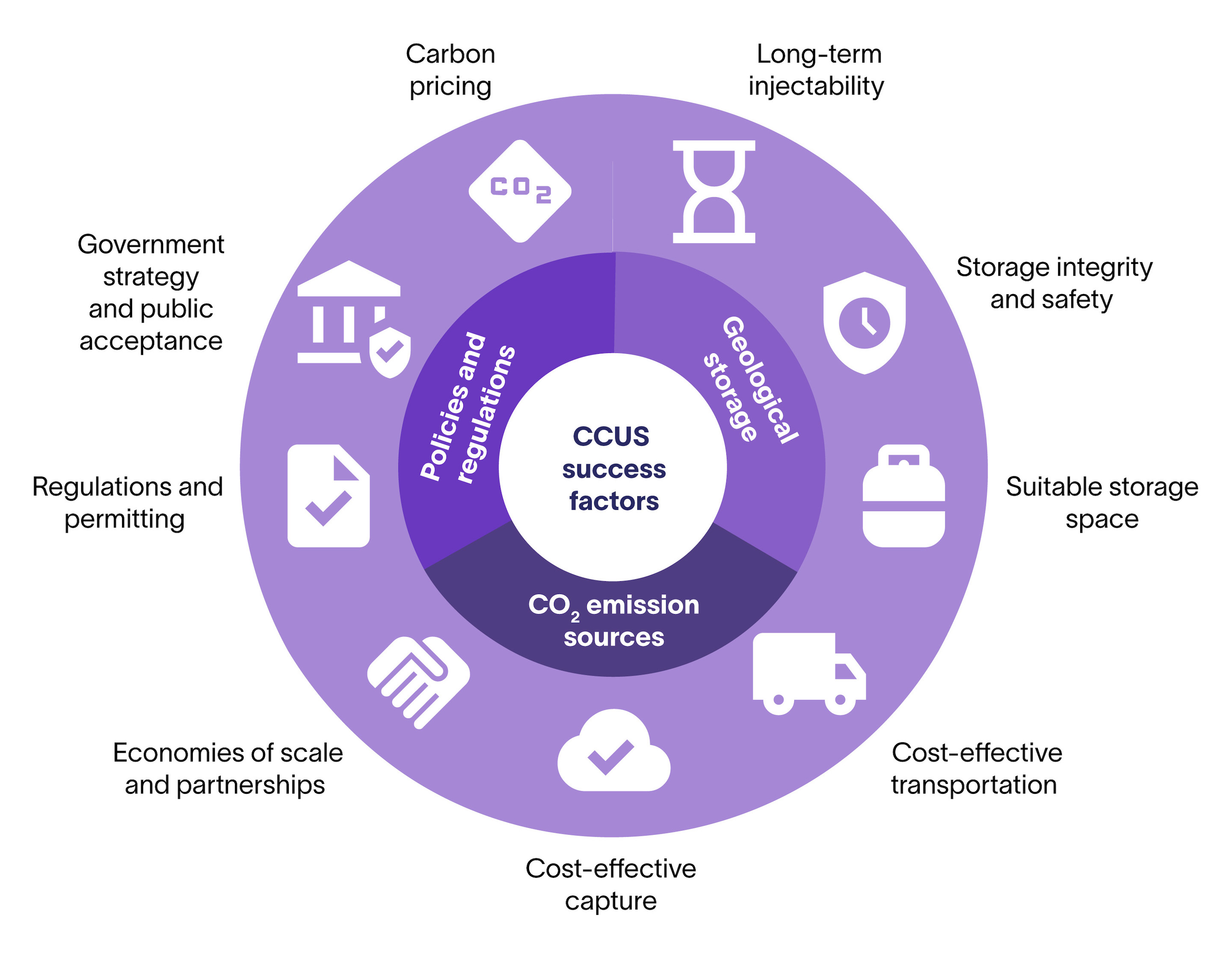This is an exciting time for carbon capture, utilization, and sequestration (CCUS) development as many projects have been announced in recent years, and more are launched each day. So, how do we ensure those projects progress to completion? What are the factors that can make or break a CCUS effort? Projects stall for a multitude of reasons, but most of those reasons can be categorized into one of the following three fundamental elements:
- the right emission profile
- proximity to suitable geological storage
- reliable financial incentives

1. Identifying the right emission profile
It all starts with the carbon dioxide (CO2) molecule. CCUS benefits from scale, so the larger the emission profile of a plant, the more cost effective it will be to capture and dispose of its CO2. It’s also important to note that flue gases with high CO2 concentrations are much cheaper to capture than diluted streams and should be prioritized for retrofit. In ethanol or ammonia plants, for example, emissions are essentially a pure CO2 stream, making it both easier and cheaper to condition and compress. In contrast, cement or power plants emit flue gas with 10–20% CO2. Before disposing of it, the CO2 must be separated from other gases (mostly nitrogen), which is an expensive process.
Scale can (and has) successfully been achieved by focusing primarily on very large emission sources. These include coal or gas power plants, or large ammonia producers for example. Another promising option, however, is to link together several emission sources as part of a hub.
A hub is defined as an aggregation of multiple emission sources that collectively release millions of metric tons of CO2. There are more than 200 of these industrial hubs around the world today. Some of them, like the port of Rotterdam, are dense, geographically colocated, while others (like the US Midwest) are more widespread. In all cases, emitters would benefit from a common infrastructure, creating a network that reduces unit costs and makes CCUS projects more feasible for all organizations involved.
Initial steps are already being taken. Forty of those 200 industrial hubs are currently being assessed for CCUS retrofit. That amounts to more than 400 million metric tons of CO2. Networks of this size are complex to develop first and foremost because they involve many parties and contractual agreements, but it’s this same scale that allows them to also deliver substantial impact in a cost-effective way.
2. Ensuring proximity to suitable geological storage
Saline formations exist across the globe, but not all are suitable for storing vast quantities of CO2. Finding the right formation depends on many technical factors including the presence of legacy wells, faults, porosity, quality of cap rock, depth, and several others. Some jurisdictions also enforce strict permitting constraints. In the United States, for example, access to pore space can be quite challenging and expensive.
This suitability of storage may not be enough if distance isn’t also taken into consideration. Sure, transport costs can be minimal in cases where CO2 is injected near to emission sources, but it can also amount to significant costs (tens of dollars per metric ton) if the use of ships or large midstream infrastructure (think hundreds of miles) is required. It’s for this reason that prioritizing plants within proximity storage or common infrastructure greatly increases a project’s chances of success.
3. Establishing reliable financial incentives
Finally, and most importantly, there must be the right economic incentives to make a CCUS project commercially viable. CCUS is a climate change mitigation solution that only makes sense if carbon is considered an externality, either in the form of an incentive or a penalty. Governments must decide whether CCUS will be part of their road map to net-zero commitments and, if so, enact policies and regulatory frameworks that provide sufficient incentive and confidence for all parties involved.
Over time, there will be additional market mechanisms to financially sustain CCUS projects. The emergence of voluntary carbon markets and green premium will complement policies, but that will take time to mature and materialize. These markets are in their infancy and require protocols—along with trustable registry, audit processes, carbon offset valuation methods, and offset buyers and sellers—to be established.
At the end of the day, even with all these key elements in place, CCUS will only happen when emitters themselves decide to invest. They not only sit at the heart of today’s decarbonization ambitions, but also have the power to accelerate the pace of change toward the expected growth of the CCUS industry and its critical role in fighting climate change.




